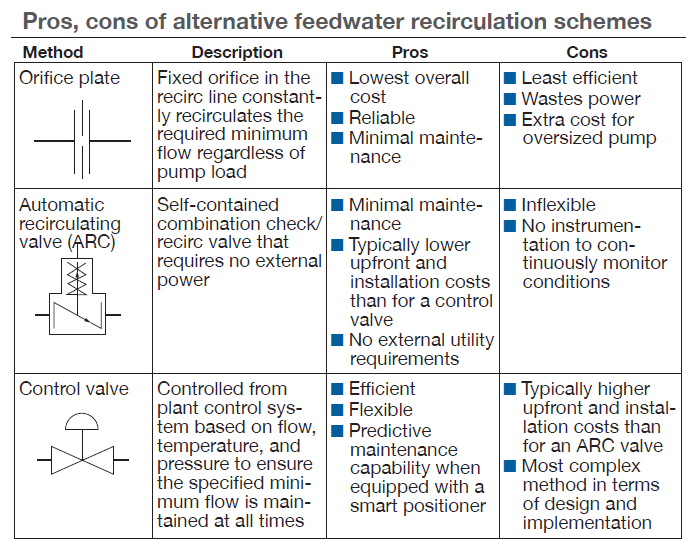One of the most important systems in a powerplant is the boiler feedwater (BFW) system, says Henry Kwan of SNC Lavalin Constructors Inc, who has more than a decade of experience in the design of thermal energy systems. When well-designed it can accommodate the wide range of operating conditions required to meet today’s varying power demands. Failure of the BFW system to meet expectations results in lost production and plant downtime.
Not all systems are equal. Owner/operators often opt for a particular type of pump system to save money, only to discover the system is not flexible enough to grow with increased demand. Making the right investment in the BFW system, whether a full replacement, retrofit, or new build, can save on maintenance costs, prevent system failure, and maintain production rates.
The top concern is maintaining minimum flow. Every BFW pump manufacturer specifies a minimum flow for its equipment. Operating below this minimum flow creates hydraulic instability, which ultimately leads to cavitation and excessive vibration that can damage the pump bearings and other internal parts.
In addition, running at less than the minimum continuous thermal flow promotes a rapid increase in fluid temperature, potentially flashing the water to vapor. A recirculation line is essential to ensure the feedwater pump is always running above the specified minimum flow. The chart illustrates three typical methods for BFW recirculation systems.

The orifice method is a continuous recirculation system that uses a fixed orifice or a series of fixed orifices in the recirculation line to maintain the required minimum flow regardless of the pump load. The orifice is the lowest cost option; however, it also is the least efficient. Even at full operating load, the system continually recirculates the pump minimum flow, which leads to a higher parasitic load and the need for an oversized pump.
While this system is highly reliable, has a lower installation cost, and requires minimal maintenance, it rarely is considered because of the additional cost for operating the oversized pump. This method typically is used for low-volume, low-head systems.
An ARC valve is a combined, self-contained check valve and recirculating valve requiring no external power. The mechanical design allows the check valve disc to sense the flow and then modulate the recirculation line to ensure the minimum flow is maintained at all times.
With this method, everything is built into the valve so there is minimal maintenance. But there is no flexibility for adjusting the ARC valve during operation. Plus, if you want to upsize, you’ll either need a larger ARC valve or a different method.
A modulating control valve gives the most efficient and flexible option for minimum-flow pump protection. This valve is controlled by the plant control system based on flow, temperature, and pressure measurement, ensuring that the specified minimum flow is maintained at all times. When coupled with a smart-valve positioner, diagnostic information is easily accessible for predictive maintenance, which can help prevent unexpected failures and downtime.
Continuous monitoring allows system optimization by way of modifications to the operating parameters. In addition, a control valve equipped with severe-service trim can handle higher pressure drops to the low-pressure steam drum. While the control valve typically has a higher upfront cost than the other methods, some end-users believe this investment will pay for itself with the efficiency and flexibility it provides.
Which method is best? The decision usually comes down to paying more upfront for the flexibility and efficiency of the control valve or going with a less expensive, easier-to-install ARC valve.
Based on the experience of SNC Lavalin Constructors Inc, the control-valve method is preferred by end users, with some plants retrofitting the recirculation system with a control valve that can respond to changing flow conditions. A process engineer can perform a cost/benefit analysis to help you determine the right system for your plant, and then can help you establish a well-defined scope, budget, schedule and identify risks when upgrading your system.



